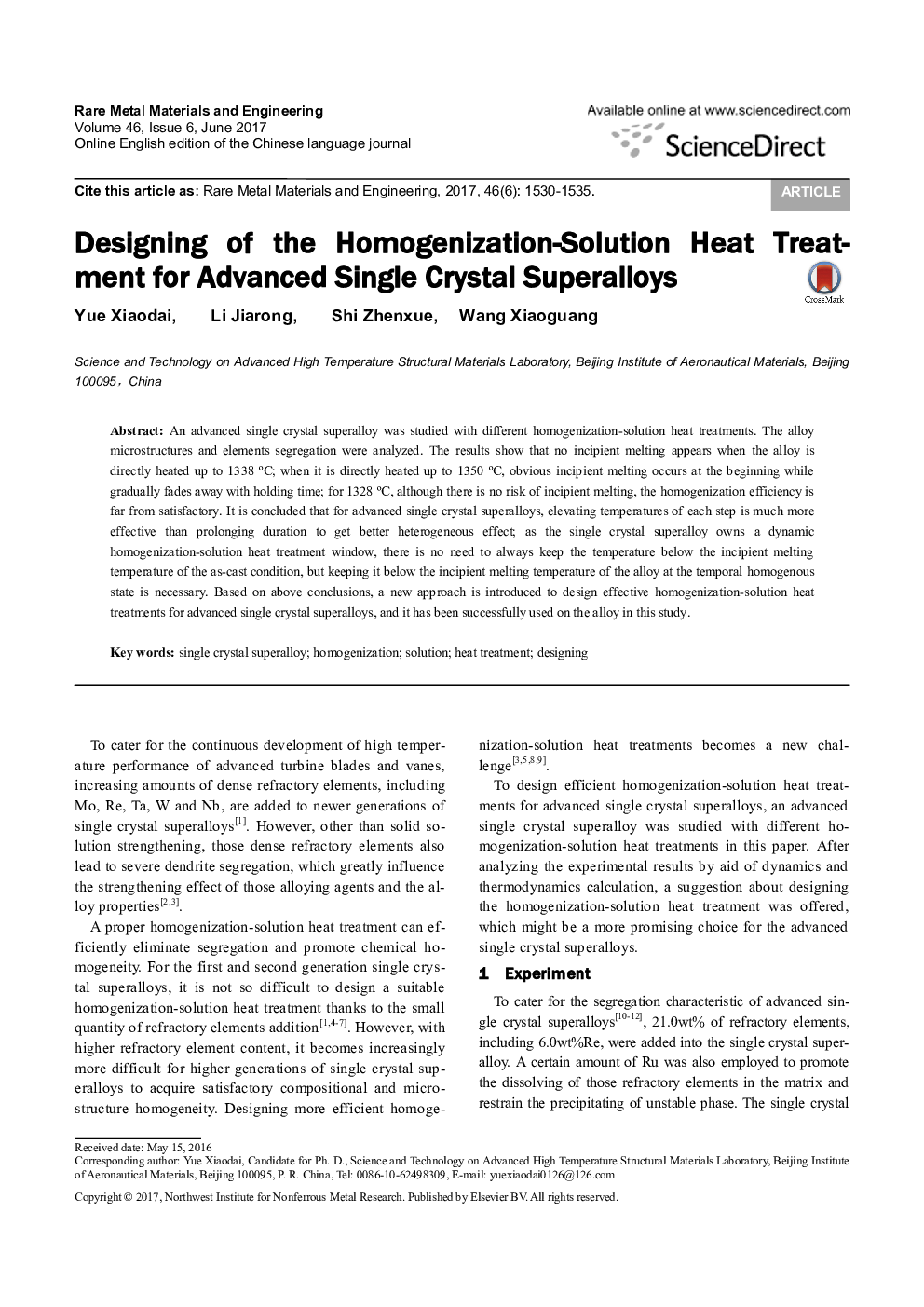| Article ID | Journal | Published Year | Pages | File Type |
|---|---|---|---|---|
| 7210369 | Rare Metal Materials and Engineering | 2017 | 6 Pages |
Abstract
An advanced single crystal superalloy was studied with different homogenization-solution heat treatments. The alloy microstructures and elements segregation were analyzed. The results show that no incipient melting appears when the alloy is directly heated up to 1338 °C; when it is directly heated up to 1350 °C, obvious incipient melting occurs at the beginning while gradually fades away with holding time; for 1328 °C, although there is no risk of incipient melting, the homogenization efficiency is far from satisfactory. It is concluded that for advanced single crystal superalloys, elevating temperatures of each step is much more effective than prolonging duration to get better heterogeneous effect; as the single crystal superalloy owns a dynamic homogenization-solution heat treatment window, there is no need to always keep the temperature below the incipient melting temperature of the as-cast condition, but keeping it below the incipient melting temperature of the alloy at the temporal homogenous state is necessary. Based on above conclusions, a new approach is introduced to design effective homogenization-solution heat treatments for advanced single crystal superalloys, and it has been successfully used on the alloy in this study.
Related Topics
Physical Sciences and Engineering
Engineering
Mechanics of Materials
Authors
Yue Xiaodai, Li Jiarong, Shi Zhenxue, Wang Xiaoguang,
